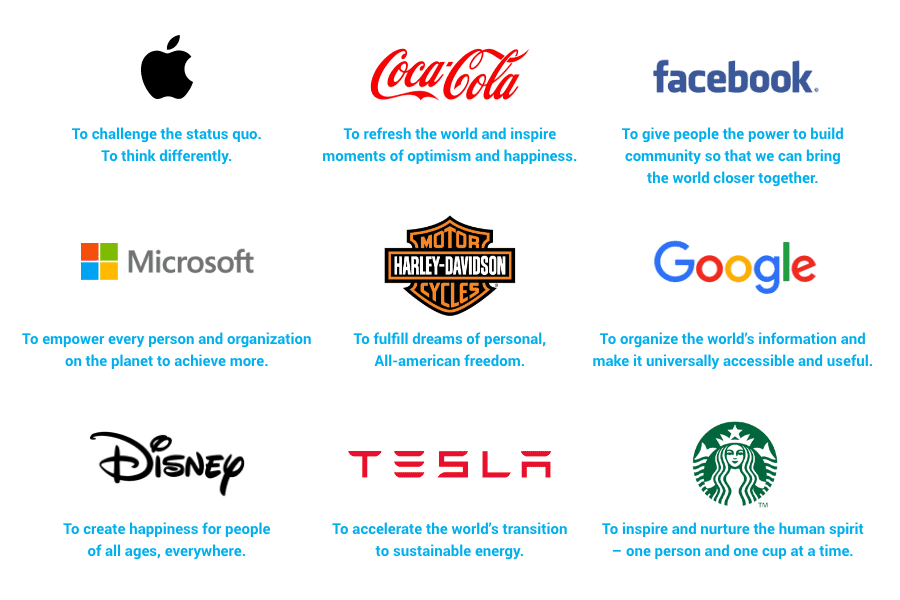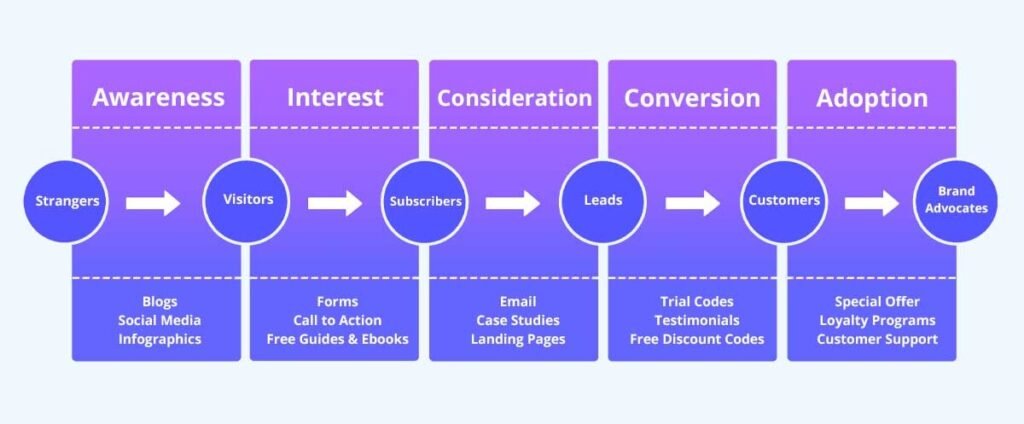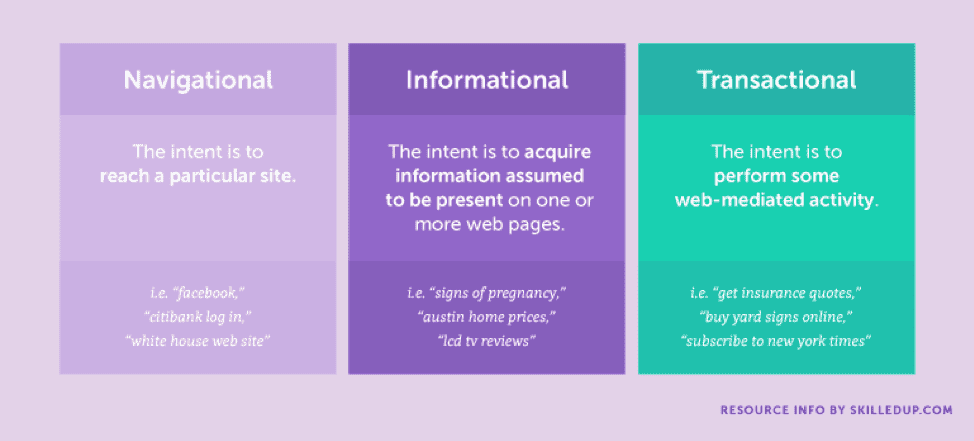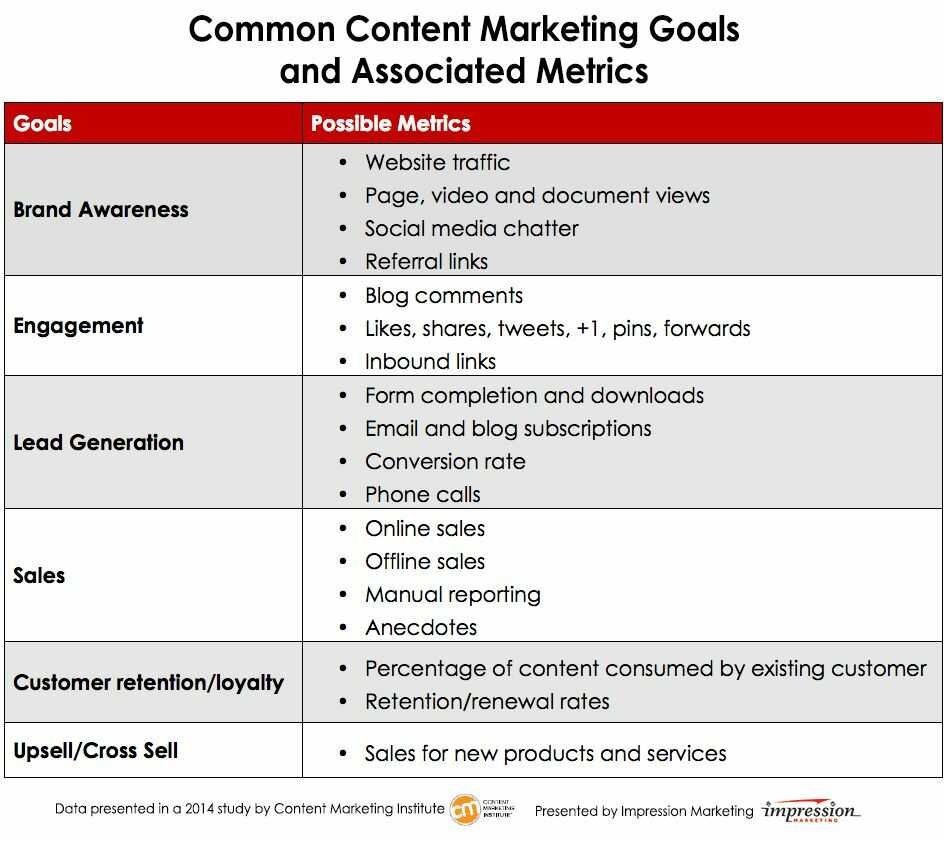Have you ever made the mistake of creating content just for the sake of it? I know many brands have, and they have realized their error the hard way.
They started writing blog posts, for instance, because:
- It’s the new marketing trend
- They just wanted to tick a box
- A guru claimed that “Google loves fresh content.”
- It’ll keep the blog looking active
- The boss said so
But if that’s what the extent of your content or blog planning is limited to, you really need to take a step back. Your content is probably adding no value in the lives of your target audience, or to your brand.
Without blogging objectives, you can’t measure content performance. And without performance reporting in place, you are likely to waste time, money, and human resources running around in circles.
That is why it is super important to set concrete content marketing goals from the beginning. Let’s see how.
Disclaimer: If you buy any products through links on this site, I may earn a commission. But it doesn't make any difference to your cost, and it helps me keep this blog running. So you could always read my articles for free.
Defining content marketing goals
Goal setting is carried out at two levels. One refers to the overall, long term purpose(s) of all the content you are writing.
Other refers to the short-term, immediate purpose(s) associated with each individual piece of content. Let’s take a closer look at both of these in more detail.
Types of long term content marketing goals
Within the scope of long term content goals, there are 3 major types that you must keep in mind. This means you should define at least 3 goals for your blog, so you have one to match with each type.
Business/personal objective
This is your ultimate answer to why you plan to write content and invest in inbound marketing. It refers to the main benefits that you are hoping to achieve from a content website or blog.

There are many benefits of writing content or blogging on a consistent basis. So you can select one or more of these objectives.
- Build thought leadership for coaching, consulting or speaking gigs
- Become an influencer to make money by promoting other brands
- Promote and sell affiliate products and earn commissions
- Drive more customers for your own ecommerce business
- Generate leads so you or your sales team could engage them
- Strengthen your brand and stay fresh in minds of prospects and customers
- Keep your customers updated on new product features and releases
- Connect with prospects and customers by taking them behind the scenes
- Drive traffic and pageviews for advertising opportunities and revenue
- Become famous and get recognized on cafes and airports
- Educate customers to retain them and boost product adoption
Whatever your personal or business goal is behind starting a content website, it has to be clear from the start.
Audience objective
Just defining the business goal is limited in the sense that it caters only to what you want as a brand.
But you can achieve your goal only when you help your target audience achieve theirs. Every successful brand has a mission regarding what they do for their customers.

So in addition to a business goal, you must also define an audience goal. This refers to having an objective regarding how your content will add value to your target audience:
- What will it help them achieve to the fullest?
- What problem will it solve for them once and for all?
- What will be really helpful for them to get what they want?
To understand this better, let’s say you are blogging for a travel brand. So you decide to create a travel blog. But the problem is that there are hundreds of other blogs or content websites on this topic.
For your content to be able to make a dent, it has to be the best travel blog and meet the informational needs of your target audience in a way no other blog has.
So for instance, you research your target audience and see that one of their issues is not having enough information on a budget.
And that would become the goal you’re helping your audience achieve – travelling in a way that saves them the most money.
By setting an objective about what your content site will do for the audience, you’ll be able to create content which is miles ahead of competitors.
Production objective
By now you’ve a sense of your own goal as well as the goal you’re helping your readers with. So now you need an efficiency goal to move the needle on these two goals.
Take inventory of the content you already have. Then think about where you want your blog to be and how much time and content you’ll need to get there.
The more time you’re willing to wait for, the less content you’ll need per week. But if you want to get there fast, you’ll need to publish more content.
Although it varies from one brand to another, but on average, a blog or content site starts picking up only when it has at least 100 high-quality articles or blog posts.
In fact, a study shows that a significant spike in traffic happens after you’re reached the 300 blog posts mark.

This means if you set out to publish 100 pieces of content within a year, you’ll need to write and publish about 8 pieces of content per month, or 2 per week.
Production goals are important because they help you keep on track and connect the short term with long term.
Types of short term content marketing goals
Here again, there are 3 major types that you must keep in mind when setting goals for any piece of content you plan to create.
This means you should define at least 3 goals for each piece of content, so you have one to match with each type.
Content conversion goal
To start setting up this objective, the first thing you need to understand is the content funnel.
It is based on the principle that each prospect goes through a journey towards becoming your customer and then brand advocate.

The more stages someone completes, the further they will be in the lifecycle, and the closer they will be to becoming a buyer.
So when setting goals for a piece of content, your first and core goal will always be related to moving the readers from one stage to the next.
For example, your goal may be to educate and move the people who are in the consideration stage to the conversion stage.
Then to achieve this goal, you may plan to write a case study of how a previous buyer benefitted from your product, or a table comparing your product to competitors.
Content quality goal
Just defining the conversion goal is limited in the sense that it caters only to what you want as a brand for your target audience to do. But you can achieve your goal only when you help your target audience achieve theirs.
So in addition to a conversion goal, you must also define a quality goal. This refers to having an objective regarding how your content will add value to your target audience:
- What will it help them achieve to the fullest?
- What problem will it solve for them once and for all?
- What will be really helpful for them to get what they want?
To understand this better, let’s say you are writing content for a travel brand and you realize a lot of their target audience search Google for “things to do in Melbourne”.
So you decide to create content on this topic. But the problem is that there are hundreds of other articles/videos on the same topic.
For your content to be able to make a dent, it has to be the best piece on this topic. And for it to be the best on this topic, it should deeply satisfy the search intent.

Sure, you can create a bullet list of things to do in Melbourne like some of the other websites have done, but could there be something better?
You’ll really need to get inside the mind-set of people who search this term in Google and give them what they really want.
One way could be to narrow the items in your to do list by who the readers are. So the reader would be able to filter the list based on things to do for solo travelers, families, couples etc.
In other words, you’re not just giving them a list, but also helping them decide what activities would be better suites for them. And that would be your quality goal. For example:
Educating the reader about all the options in and around Melbourne, and helping them select from those options.
See the difference?
By setting a quality goal for each piece of content, you’ll be able to create content which is miles ahead of competitors.
Content distribution goal
Last but not the least, you need at least one content distribution goal for the content you are about to create. This will tie in your content to the distribution or marketing channel it is meant for.

High Search Engine Visibility – This refers to ranking higher and getting more traffic from search engines. It is one of the most common goals set by a brand, and a major reason behind their content creation efforts.
It’s the holy grail of every marketer because if you clinch the top positions on search engines, you’ll likely pull more visitors to your site.
So the content you create for SEO is based on addressing the queries people are typing in search engines. But only those which are directly or subtly relevant to your brand.
You do this by writing and publishing several, high quality blog posts on a variety of topics. The more blog posts you have and the better they satisfy search intent, the more pages of your website are indexed.
This gives you a higher chance you have showing up in search results when your target audience looks for information on those topics.
Build High Authority Links – Link building is the process of increasing your discoverability via other websites. The more links there are on other websites pointing to your website, the more visitors you’re likely to get from those websites.
It also helps with SEO because search engines consider content that gets links for a particular keyword as good and relevant for that keyword.
Therefore, that content will rank in the top SERPs (search engine result pages) for that keyword. Without authority links, your brand will struggle to get awareness and traffic from search engines.
The content produced with the main intention of earning backlinks is also known as linkable asset or linkbait. Linkable assets include research studies, definitive guides, breaking news and more.
But just the type of content you publish will not guarantee a flood of backlinks. It has to be something remarkable. And you’ll need to promote it adequately.
Drive Social Mentions/Shares – Social media is powerful and many brands depend on it for awareness and engagement.
Getting your content to spread (also known as going viral) via a major social media network can go a long way in boosting brand awareness.
To meet this objective, your content needs to
- be more visual
- be tailored to the specifications and audience of a specific social network
- have some entertainment/emotional value
People share or mention something on social media when it really invokes a strong emotion like awe, surprise or respect. That’s why content with a lot of graphics or research studies tends to do well.
Applying the SMART framework
Up until now, we have discussed about all the types of goals you need to set. But until you understand the SMART framework, you’re not ready to set them yet.
The SMART framework is the golden standard when it comes to goal setting in any area. I am sure you may have heard of it in some other context, but it’s worth repeating on how it relates to writing content.

Of all the 6 total types of objectives I covered above, you need to pass each goal through the SMART framework to make it ready for execution.
This means, as you’re setting each purpose, ask yourself the following questions and modify the purpose accordingly.
Is it specific?
Remember, great content must have a hard and fast objective that you are trying to reach.
“Create great content on healthcare” isn’t a SMART goal because it isn’t specific. Instead, ask yourself:
- How good was your last healthcare article?
- What improvements have you made recently?
- How much of a better article do you want to create?
You can leverage on key performance indicators like visitors and leads to set your goals.
For example, when setting your blog objective, instead of saying “I will boost my blog traffic”, say “I will boost my blog traffic by increasing my publishing frequency from 2 to 4 times in a week”.
Is it measurable?
SMART goals are measurable, meaning that you can gauge your progress and see how far you have gone.
“Increase the blog traffic from Facebook shares” isn’t a SMART goal because you can’t measure the increase.
Instead, ask yourself: How much Facebook shares should you be striving for?
So saying “I want to increase my blog traffic from Facebook shares by 25% each month” is more apt.
Is it attainable?
When you set blog goals, do you consider your ability to achieve it?
While it is important to set measurable content objectives, it is even more important to make sure that these objectives are rooted in reality.
For example, if you get 100 new blog readers from your blog last month, try to increase that number to 200 or 300 this month, rather than a whopping 1000.
This doesn’t mean that you shouldn’t aim high enough, but while you do that make sure your goals are attainable otherwise you may fall off the tracks.
Is it relevant?
Make sure that your content goals are relevant to the overall goals of your business. In other words, the goals should align with your content purpose.
For example, before I invest in growing my traffic from email marketing, for any of my blogs, I always consider if it will lead to more revenue.
I also consider if my chosen marketing campaigns would allow me significantly increase my blog’s email traffic.
This usually allows me to adjust the metrics for tracking my progress.
For example, I have found that creating a series of Facebook videos and increasing the average views per video will boost your social media standings and attract more followers.
Is it time-bound
If you want to keep to a schedule in your content goal setting, then put a time stamp on it.
Deadlines put a healthy dose of pressure to ensure that you accomplish your goal when you set out to do so.
For example, which would you prefer: to write 8 long-form posts or to write 8 long-form posts by month-end. If you pick the latter, you are right.
Go back to 6 goal types we talked about earlier. Hopefully by now you’re starting to understand how to take those vague ideas and convert into workable, objective goals.
How goals impact content decisions
Once you’ve defined your goals, it’s important to understand how they translate to actual day to day content creation activities. So in this section, I’ll talk about some common goals and to plan/modify your content strategy to meet them.
Rank on search engines
If higher search rankings is your main goal, then long, comprehensive content has been known to rank better. So that’s what you should strive to achieve.
But it’s easier said than done. You will need a dedicated team of professional writers and editors, along with detailed content briefs, to be able to publish this kind of content on a regular basis.
Let’s say you pick up the key phrase “YouTube SEO” to rank for. Chances are that you will not succeed.
Think about it.
You’ll be going head-to-head with the likes of Backlinko and Neil Patel who have probably earned a life spot for the key phrase.
Why? Because they have created the best guides on the subject matter, which is what Google wants.
So Google won’t rank you above them.
If you ignore this fact and proceed to produce your own mediocre content on the subject, it will be a waste of time and resources.
Creating the best resource for a particular subject entails a lot of things. And it starts with identifying what the reader wants and delivering it in the best possible way.
Increase social engagement
Long-form blog content has also been known to drive better engagements on social media. Buzzsumo and OkDork analyzed 1 million blog posts and found out that posts with at least one visual have a better chance at getting shares than posts with none.
So if your goal is better social engagement, create clear images for your content, but more importantly, optimize them for specific social channels.
For example, Pinterest recommends that your images should be set at 600 X 900 pixels for the best results. This makes it look better when a reader clicks the share button.
Original research also brings in more shares. Curalate is a typical example of a company that has successfully executed this.
They are known for creating unique infographics that standout for the unique information they contain.
You can also conduct surveys and present the answers to pressing questions with beautiful graphics and videos.
Conclusion
There’s no question that content goals are super important for your business success, whether you choose to learn content writing by yourself or outsource to a professional.
If you do it right, then you are already halfway to successful content. But if you do it wrong, even the most expensive written content will fall flat.
Remember, you must tailor your content objectives to your business alone and once you start achieving your goals, find out what’s working for you and double down on it.
So have you drawn up a content goal before? If yes, what changes are you going to make to it? Let me know in the comment section below.






Setting clear content marketing goals is crucial for measuring performance and adding value to your target audience. It’s time to move beyond creating content just for the sake of it and focus on strategic content planning that drives real results.